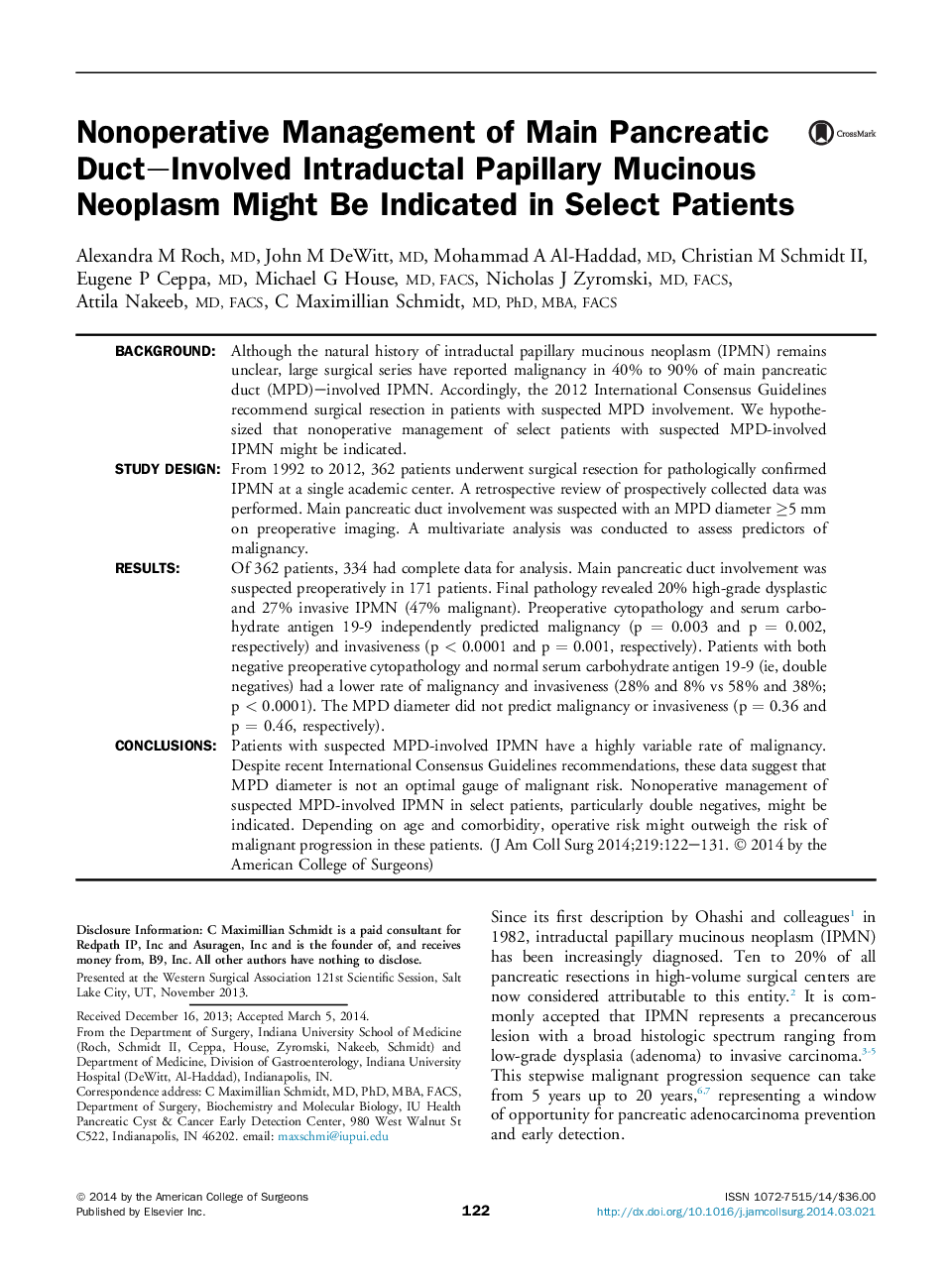| Article ID | Journal | Published Year | Pages | File Type |
|---|---|---|---|---|
| 4291641 | Journal of the American College of Surgeons | 2014 | 8 Pages |
BackgroundAlthough the natural history of intraductal papillary mucinous neoplasm (IPMN) remains unclear, large surgical series have reported malignancy in 40% to 90% of main pancreatic duct (MPD)–involved IPMN. Accordingly, the 2012 International Consensus Guidelines recommend surgical resection in patients with suspected MPD involvement. We hypothesized that nonoperative management of select patients with suspected MPD-involved IPMN might be indicated.Study DesignFrom 1992 to 2012, 362 patients underwent surgical resection for pathologically confirmed IPMN at a single academic center. A retrospective review of prospectively collected data was performed. Main pancreatic duct involvement was suspected with an MPD diameter ≥5 mm on preoperative imaging. A multivariate analysis was conducted to assess predictors of malignancy.ResultsOf 362 patients, 334 had complete data for analysis. Main pancreatic duct involvement was suspected preoperatively in 171 patients. Final pathology revealed 20% high-grade dysplastic and 27% invasive IPMN (47% malignant). Preoperative cytopathology and serum carbohydrate antigen 19-9 independently predicted malignancy (p = 0.003 and p = 0.002, respectively) and invasiveness (p < 0.0001 and p = 0.001, respectively). Patients with both negative preoperative cytopathology and normal serum carbohydrate antigen 19-9 (ie, double negatives) had a lower rate of malignancy and invasiveness (28% and 8% vs 58% and 38%; p < 0.0001). The MPD diameter did not predict malignancy or invasiveness (p = 0.36 and p = 0.46, respectively).ConclusionsPatients with suspected MPD-involved IPMN have a highly variable rate of malignancy. Despite recent International Consensus Guidelines recommendations, these data suggest that MPD diameter is not an optimal gauge of malignant risk. Nonoperative management of suspected MPD-involved IPMN in select patients, particularly double negatives, might be indicated. Depending on age and comorbidity, operative risk might outweigh the risk of malignant progression in these patients.
